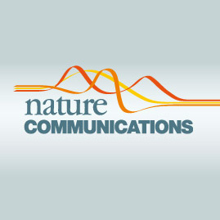Filter
Associated Lab
- Ahrens Lab (1) Apply Ahrens Lab filter
- Aso Lab (4) Apply Aso Lab filter
- Branson Lab (53) Apply Branson Lab filter
- Card Lab (3) Apply Card Lab filter
- Cardona Lab (1) Apply Cardona Lab filter
- Dickson Lab (1) Apply Dickson Lab filter
- Dudman Lab (1) Apply Dudman Lab filter
- Fetter Lab (1) Apply Fetter Lab filter
- Freeman Lab (2) Apply Freeman Lab filter
- Harris Lab (1) Apply Harris Lab filter
- Heberlein Lab (1) Apply Heberlein Lab filter
- Jayaraman Lab (1) Apply Jayaraman Lab filter
- Karpova Lab (1) Apply Karpova Lab filter
- Keller Lab (3) Apply Keller Lab filter
- Otopalik Lab (1) Apply Otopalik Lab filter
- Pachitariu Lab (1) Apply Pachitariu Lab filter
- Reiser Lab (4) Apply Reiser Lab filter
- Rubin Lab (8) Apply Rubin Lab filter
- Simpson Lab (1) Apply Simpson Lab filter
- Svoboda Lab (1) Apply Svoboda Lab filter
- Tervo Lab (1) Apply Tervo Lab filter
- Truman Lab (1) Apply Truman Lab filter
- Turaga Lab (5) Apply Turaga Lab filter
- Zlatic Lab (1) Apply Zlatic Lab filter
Associated Project Team
Publication Date
- 2025 (4) Apply 2025 filter
- 2024 (4) Apply 2024 filter
- 2023 (2) Apply 2023 filter
- 2021 (2) Apply 2021 filter
- 2020 (3) Apply 2020 filter
- 2019 (3) Apply 2019 filter
- 2018 (5) Apply 2018 filter
- 2017 (7) Apply 2017 filter
- 2016 (5) Apply 2016 filter
- 2015 (6) Apply 2015 filter
- 2014 (6) Apply 2014 filter
- 2012 (3) Apply 2012 filter
- 2011 (1) Apply 2011 filter
- 2009 (1) Apply 2009 filter
- 2005 (1) Apply 2005 filter
Type of Publication
53 Publications
Showing 51-53 of 53 resultsThe body of an animal influences how the nervous system produces behavior. Therefore, detailed modeling of the neural control of sensorimotor behavior requires a detailed model of the body. Here we contribute an anatomically-detailed biomechanical whole-body model of the fruit fly Drosophila melanogaster in the MuJoCo physics engine. Our model is general-purpose, enabling the simulation of diverse fly behaviors, both on land and in the air. We demonstrate the generality of our model by simulating realistic locomotion, both flight and walking. To support these behaviors, we have extended MuJoCo with phenomenological models of fluid forces and adhesion forces. Through data-driven end-to-end reinforcement learning, we demonstrate that these advances enable the training of neural network controllers capable of realistic locomotion along complex trajectories based on high-level steering control signals. We demonstrate the use of visual sensors and the re-use of a pre-trained general-purpose flight controller by training the model to perform visually guided flight tasks. Our project is an open-source platform for modeling neural control of sensorimotor behavior in an embodied context.Competing Interest StatementThe authors have declared no competing interest.
The body of an animal influences how its nervous system generates behavior1. Accurately modeling the neural control of sensorimotor behavior requires an anatomically detailed biomechanical representation of the body. Here, we introduce a whole-body model of the fruit fly Drosophila melanogaster in a physics simulator. Designed as a general-purpose framework, our model enables the simulation of diverse fly behaviors, including both terrestrial and aerial locomotion. We validate its versatility by replicating realistic walking and flight behaviors. To support these behaviors, we develop new phenomenological models for fluid and adhesion forces. Using data-driven, end-to-end reinforcement learning we train neural network controllers capable of generating naturalistic locomotion along complex trajectories in response to high-level steering commands. Additionally, we show the use of visual sensors and hierarchical motor control, training a high-level controller to reuse a pre-trained low-level flight controller to perform visually guided flight tasks. Our model serves as an open-source platform for studying the neural control of sensorimotor behavior in an embodied context. Preprint: www.biorxiv.org/content/early/2024/03/14/2024.03.11.584515
Understanding how the brain works in tight concert with the rest of the central nervous system (CNS) hinges upon knowledge of coordinated activity patterns across the whole CNS. We present a method for measuring activity in an entire, non-transparent CNS with high spatiotemporal resolution. We combine a light-sheet microscope capable of simultaneous multi-view imaging at volumetric speeds 25-fold faster than the state-of-the-art, a whole-CNS imaging assay for the isolated Drosophila larval CNS and a computational framework for analysing multi-view, whole-CNS calcium imaging data. We image both brain and ventral nerve cord, covering the entire CNS at 2 or 5 Hz with two- or one-photon excitation, respectively. By mapping network activity during fictive behaviours and quantitatively comparing high-resolution whole-CNS activity maps across individuals, we predict functional connections between CNS regions and reveal neurons in the brain that identify type and temporal state of motor programs executed in the ventral nerve cord.

